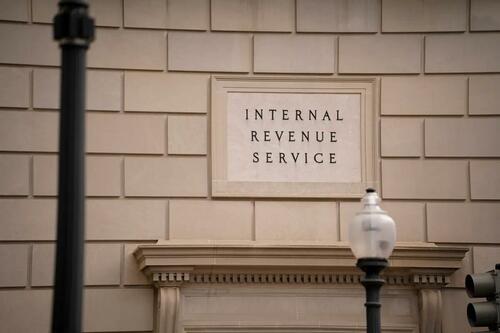Authored by Tom Ozimek via The Epoch Times (emphasis ours),
The Internal Revenue Service (IRS) is warning seniors born before 1951 that they are required to take minimum distributions from their retirement plans by the end of the year or face possible penalties.

Required minimum distributions (RMD) are amounts that many owners of individual retirement arrangements (IRA) or other retirement plans must withdraw each year—even if they’re still working.
For 2023, the Secure 2.0 Act raised the age requirement (from 72 to 73) for account owners to have to start taking the mandatory distributions from their retirement funds. This means that people born before 1951 face a Dec. 31 deadline to take the distributions—or face a possible penalty.
“RMDs are taxable income and may be subject to penalties if not timely taken,” the IRS warned in a Dec. 20 announcement.
Penalties In Focus
Account owners who fail to withdraw the full amount of the RMD by the deadline face a 25 percent excise tax on the amount not withdrawn. The penalty may be reduced to 10 percent if the RMD is corrected within two years, the IRS says.
It’s even possible for the penalty to be waived entirely if the account owner can prove that the shortfall in distributions was due to “reasonable error” and that they’re taking “reasonable steps” to remedy the shortfall.
To qualify for penalty relief, taxpayers must file Form 5329 and attach a letter explaining their situation.
The RMD rules require individuals to withdraw from their IRAs every year once they reach the age of 72 (or 73 if the account owner reaches 72 in 2023 or later). This holds true for those who are still employed.
An exception to this requirement is Roth IRAs, whose owners are not required to take RMDs during their lifetime. However, the beneficiaries of a Roth IRA are subject to the withdrawal rules after the account owner’s death.
The rules also apply to employer-sponsored retirement plans—including profit-sharing plans and 401(k) plans—although participants in such plans can delay taking RMDs until they retire. An exception is part owners of the business that is sponsoring the plan (with an ownership stake of at least 5 percent).
Other Recent Developments
On Dec. 19, the IRS said it is providing failure-to-pay penalty relief for roughly 4.7 million taxpayers who didn’t receive automated collection reminder notices from the tax agency.
The $1 billion or so in total penalty relief will be granted to certain individual taxpayers, businesses, and tax-exempt organizations for the taxable years 2020 and 2021, the IRS said.
The taxpayers eligible for the relief are those who did not receive automated reminders from the IRS to pay overdue tax bills when the agency temporarily suspended the mailing of such notices in February 2022 “due to the unprecedented effects of the COVID-19 pandemic.”
Normally, these reminders would have been sent as a follow-up after an initial notice, but the IRS didn’t send them out because it was swamped by a backlog of millions of original and amended tax returns filed at the height of the pandemic that the agency was unable to process.
The IRS did, however, send out initial balance-due notices, so penalties for failing to pay taxes owed continued to accrue.
Citing this “unusual situation,” the IRS said it’s waiving failure-to-pay penalties for certain affected taxpayers in advance of resuming normal collection notices for tax years 2020 and 2021.
The tax relief is automatic but applies only to eligible taxpayers who owe less than $100,000 in back taxes.
The failure-to-pay penalty will resume on April 1, 2024, for taxpayers eligible for the relief.
Demands to Return Pandemic-Era Relief Funds
While the IRS is waiving failure-to-pay penalties for nearly 5 million Americans, it also recently announced that it was sending letters to around 20,000 taxpayers demanding that they return wrongly claimed and received pandemic-era tax credits.
The letters demanding a return of pandemic-era relief money relate to a flood of bad claims for the pandemic-era relief program known as the Employee Retention Credit (ERC). This refundable tax credit was designed for businesses that continued paying employees during COVID-19 shutdowns.
Predatory promoters pushed a large number of improper ERC claims on unwitting businesses, the IRS said.
An investigation by the IRS Criminal Investigation Division uncovered over $2.8 billion of potentially fraudulent ERC claims.
So far, 15 fraudulent ERC cases have resulted in federal charges and of these, six have resulted in convictions. Four of those cases have reached the sentencing phase, with the average sentence being 21 months, the IRS said.
Story continues below advertisemenThe ERC tax credit, which is somewhat complex, is available to employers, not individual taxpayers.
Since the program was enacted, over 3.6 million claims have come in, with ERC-related fraud getting worse over time.


